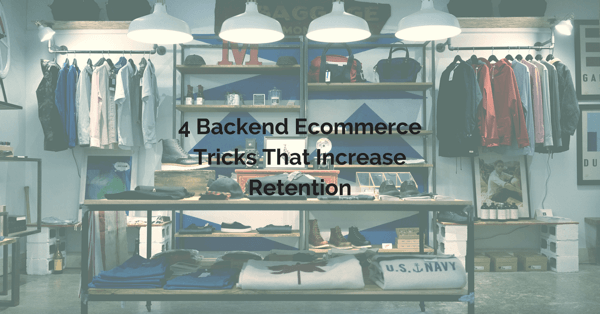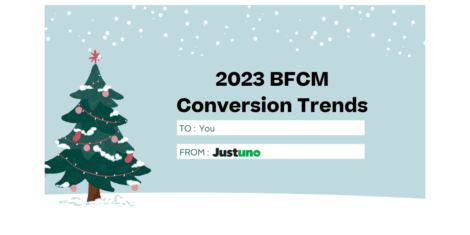Who gets into e-commerce because they’re interested in backend operations? If I asked that question in a room full of sellers, I doubt very many hands would go up. Supply chains and data feeds aren’t attractive parts of running a business.
But just like a Corvette with a great paint job can still break down on the highway, so can an online retailer find themselves tripped up on the loose ends of poor backend management.
There are backend strategies to improve just about every aspect of your business, but we’re going to focus today on retention marketing, methods to keep your customers satisfied and coming back for more. These are four of my favorite strategies for increasing retention, all on the backend.
Segment your email list to optimize marketing
Email marketing isn’t one size fits all. Each of your customers has different needs. Only when you make sure the messages you’re sending out are reaching the customers most likely to convert will your email marketing truly be optimized. Irrelevant content is one of the top reasons customers unsubscribe from email lists, and once they leave the list, you have no way of showing them new products or discounts that could get them to visit and buy again.
Email segmentation lessens this risk. Sending the right emails to the right people ensures that your marketing efforts have their best chance possible of converting. Studies have shown that 39% of businesses who segmented their email marketing lists saw higher open rates, and 24% saw increased revenue.
What are some common ways to segment your email list? How do you know what your customers are looking for? The answer is easy. You ask them. Common questions to include on your email signup form other than just name and email include:
- Gender: Men and women are one of the biggest divides in marketing. If you sell mixed gender products, this is an important category to segment.
- Interests: Target specific products to the users who will be most interested in them.
- Birthday: A great time to send them deals or just a personalized happy birthday message.
Launch flash sales to create customer excitement
Flash sales, along with other e-commerce promotions, are a great way to engage with your customer audience. These are limited-time sales where products are offered at a significant discount. They build urgency that leads to an increase in traffic and conversions because customers feel as if they won’t be able to get the deal if they don’t immediately convert. It also shows customers the value of following you on social media, subscribing to your email list, or visiting your website.
There are a few best practices in regards to what you should sell. A slower selling item bundled with a higher selling item, for example, will allow you to clear up inventory space and turn a profit on a product that normally doesn’t convert well. You could also use a flash sale to test out a new product and introduce it to your customers. Companion accessories that customers find valuable are also great products for retention, as it demonstrates to your customers that you care about them beyond their initial sale no matter how long ago that was.
Use dropshipping to flesh out your catalog
Being able to offer something new to your customers every time they come to your website is a great way to keep traffic and retention high. But launching new products too often can lead to your customers feeling burnt out on your constant launch marketing. How do you continually offer a diverse, fresh catalog that raises retention without having to annoy your customers?
Adding drop shipping as a part of your product strategy is one way to do this. Dropshipping is a form of order fulfillment practiced by both one-man e-commerce businesses and big box stores. In a dropshipping model, the seller partners up directly with a manufacturer to list and market their catalog. Sales orders are forwarded, either manually, by open API, or by dropshipping automation software, to the manufacturer, who then manages fulfillment. The seller is charged the wholesale price for the item and keeps the profits.
It’s a popular method of fulfillment, accounting for 34% of products sold on Amazon to the tune of $14.2 billion. This is a great option to add new, revolving products to your online store for a few different reasons.
- Low Risk: Since the dropshipping model doesn’t require wholesale purchase until a sale is made, sellers don’t have to invest in bulk orders for a product that may not sell.
- Scalable: The workflow for dropshipping with automation software works just the same at 10 orders as it does at 10,000 orders.
- Diverse Options: You can drop ship almost anything. This is great for adding accessories to your store. If you sell guitars, use drop shipping to sell picks and straps. If you sell makeup, use drop shipping to sell brushes and compact mirrors.
Use APIs to supercharge fulfillment speeds
I recently had to explain open APIs to a friend of mine by comparing them to a jar of office suppliers: push pins, thumbtacks, staples, sticky tack, and paper clips all tossed in together. Each item is a “piece” of information or data for your e-commerce business, such as a product or a sale. The jar represents a platform or a tool that you use for your business. Imagine each time you needed a paper clip, you had to unscrew the top of the jar, search for the paper clip, and move it into another container. How long would it take for you to access all your paper clips? How tedious would it be?
Open APIs are what happens when you take the lid off the jar. API stands for an application programming interface. It allows for the real-time sharing of sales and product information between tools and platforms.
For e-commerce businesses, this has a ton of important implications, many of which can speed up your fulfillment dramatically. Connecting your various tools through open APIs will allow shipping services instant access to orders. It could be used to allow your third-party logistics center or fulfillment service like Amazon FBA to receive sales orders as they come in. The investment to hire a contract developer to build feed management connections between open APIs will encourage customers to return and buy more because they know their orders will be fulfilled quickly.
Conclusion
The backend of your e-commerce business can be just as important as the forward facing aspects. Whether we’re talking about retention, acquisition, bounce rate, or shopping cart abandonment, sometimes we find that the issue is under the hood. With these backend tips, you could be getting to the root of your retention issues. Give one or a few a try and see for yourself how you can turn your bounces into boomerangs.





